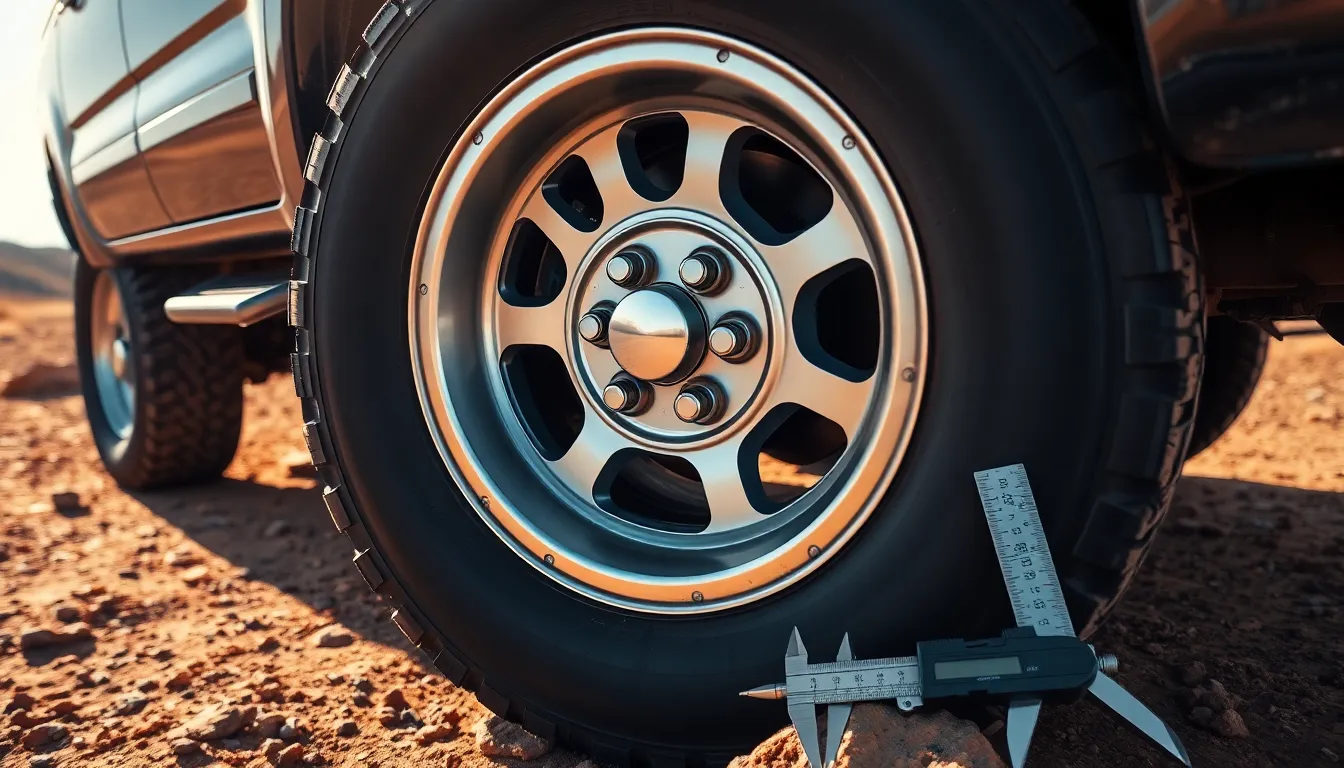When it comes to upgrading wheels or replacing tires on your Chevy 1500, understanding the lug pattern is absolutely crucial. We’ve seen countless truck owners make costly mistakes simply because they didn’t know their vehicle’s exact bolt pattern requirements.
The Chevrolet 1500 has used different lug patterns throughout its production years, and getting this wrong can mean the difference between a perfect fit and a dangerous driving situation. Whether you’re shopping for aftermarket wheels, replacing damaged rims, or simply want to ensure compatibility before making a purchase, we’ll break down everything you need to know.
We’ll explore the exact measurements, variations across different model years, and practical tips that’ll save you time and money. By the end of this guide, you’ll confidently identify your truck’s lug pattern and make informed decisions about your next wheel purchase.
Understanding Lug Patterns and Bolt Patterns
Lug patterns define the number and arrangement of wheel bolts that secure wheels to your Chevy 1500’s hub. These patterns consist of two key measurements: the number of bolt holes and the diameter of the circle formed by connecting the centers of these holes.
Bolt patterns determine wheel compatibility with your truck’s hub assembly. The pattern appears as a numerical expression such as 6×139.7mm or 6×5.5 inches, where the first number represents bolt hole count and the second indicates the pitch circle diameter.
Common Chevy 1500 lug pattern specifications include:
| Pattern Type | Measurement (mm) | Measurement (inches) | Model Years |
|---|---|---|---|
| 6-lug | 6×139.7 | 6×5.5 | 1988-2018 |
| 6-lug | 6×127 | 6×5.0 | Select models |
| 5-lug | 5×127 | 5×5.0 | Some variants |
Pitch circle diameter measures the distance across the center of the bolt hole circle. This measurement remains constant regardless of whether you use metric or imperial units, though the numerical values differ between measurement systems.
Lug pattern identification involves three essential steps:
- Count the total number of bolt holes on your wheel
- Measure the distance between opposite bolt holes for even numbered patterns
- Calculate the pitch circle diameter using geometric formulas for odd numbered patterns
Thread pitch affects bolt compatibility beyond basic pattern matching. Most Chevy 1500 trucks use M14x1.5 thread specifications, meaning 14mm diameter bolts with 1.5mm thread spacing.
Wheel offset influences how your replacement wheels align with the truck’s suspension geometry. Incorrect offset measurements can cause rubbing issues against fenders or suspension components even when lug patterns match perfectly.
Center bore diameter determines how wheels mount flush against the hub assembly. Chevy 1500 trucks typically feature a 78.1mm center bore, requiring wheels with matching or larger bore diameters plus appropriate hub rings for proper fitment.
Chevy 1500 Lug Pattern Specifications

Understanding the exact lug pattern specifications for your Chevy 1500 ensures proper wheel fitment and safe operation. The standard lug pattern for the Chevrolet Silverado 1500 uses a 6×139.7mm bolt configuration across most model years.
Standard 6×5.5 Bolt Pattern
Many Chevy truck owners assume their 1500 uses the common 6×5.5 inch bolt pattern found on older models and lighter vehicles. The Silverado 1500 actually utilizes the 6×139.7mm pattern as its primary specification rather than the 6×5.5 inch configuration. Converting between measurements shows that 139.7mm equals approximately 5.5 inches, but manufacturers specify the metric measurement for precision. Aftermarket wheel companies often list both measurements to avoid confusion among truck owners shopping for replacement wheels.
Thread Pitch and Torque Requirements
Proper thread specifications and torque values protect your investment and ensure wheel security on your Chevy 1500. The thread size for Silverado 1500 lug bolts measures M14 x 1.5, which represents the standard configuration for modern vehicles in this class.
| Specification | Value |
|---|---|
| Thread Size | M14 x 1.5 |
| Recommended Torque | 140 lb-ft |
| Lug Nut Type | Conical seat/mag-style |
Achieving the correct torque specification of 140 lb-ft prevents wheel loosening during operation while avoiding over-tightening that damages threads or warps brake rotors. Always consult your exact vehicle manual for exact torque requirements since variations exist between model years and trim levels. Selecting the appropriate lug nut type depends on your wheel design, with conical seat and mag-style options being the most common for Silverado 1500 applications.
Different Generations of Chevy 1500 Lug Patterns
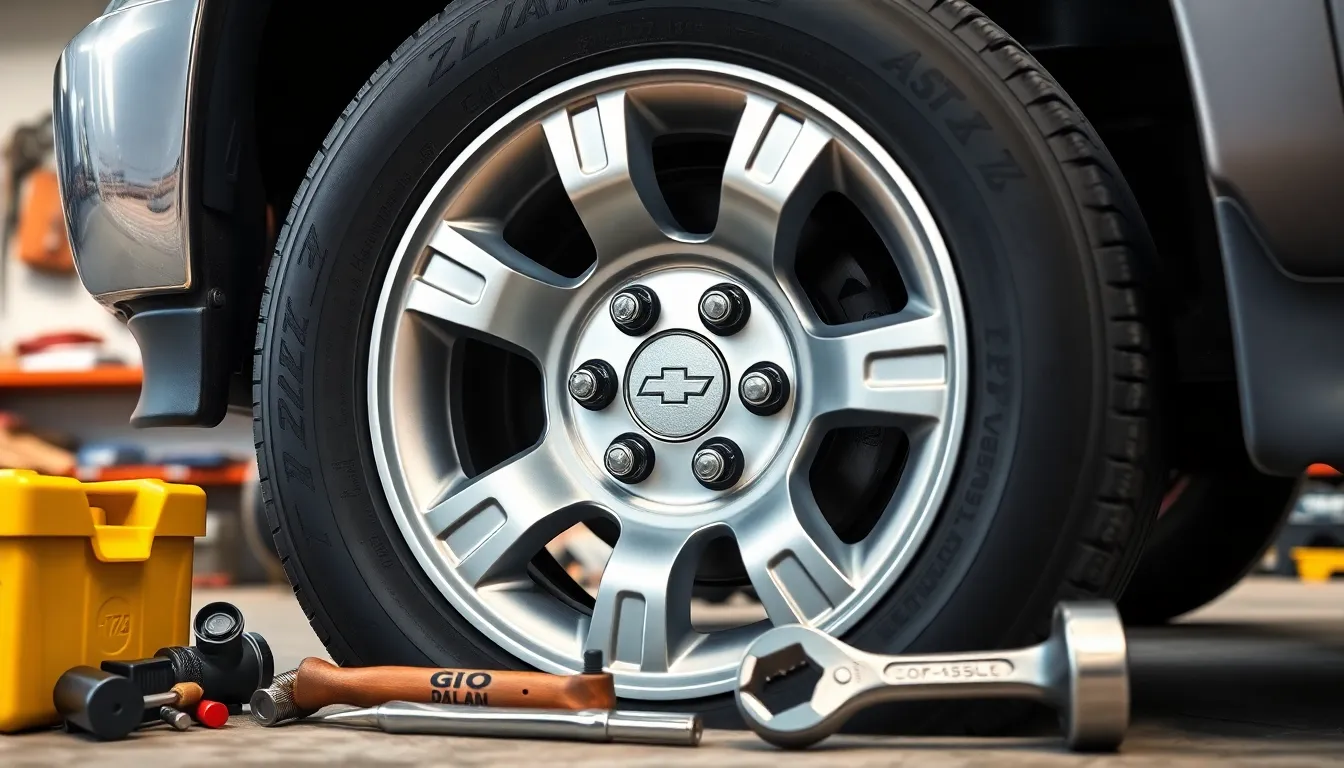
Chevrolet maintained remarkable consistency across Silverado 1500 generations with the 6×139.7 mm bolt pattern. Understanding these generation-exact details helps you make confident wheel purchasing decisions for your truck.
1988-1998 GMT400 Series
GMT400 series trucks established the foundation for modern Chevy half-ton lug patterns with their 6×139.7 mm configuration. These C/K 1500 models preceded the Silverado name but shared identical bolt specifications with later generations. The 6×5.5 inch imperial measurement provides the same fitment as the metric 6×139.7 mm pattern across all GMT400 model years.
1999-2006 GMT800 Series
GMT800 platform Silverado 1500 trucks continued the proven 6×139.7 mm lug pattern without deviation. Cross-generational compatibility became a major advantage during this era as aftermarket wheel manufacturers standardized their designs around this bolt configuration. These models maintained the same thread pitch and torque specifications as their GMT400 predecessors.
2007-2013 GMT900 Series
GMT900 series maintained the established 6×139.7 mm bolt pattern throughout its production run. These Silverado 1500 models benefited from enhanced wheel hub engineering while preserving compatibility with existing wheel selections. The consistency across this generation eliminated confusion for truck owners upgrading from earlier platforms.
2014-Present GMT K2XX Series
K2XX platform trucks from 2014-2018 and T1XX models from 2019-present generally retain the 6×139.7 mm lug pattern standard. Some special trim variations or limited builds may deviate from this configuration. Always verify your exact model’s bolt pattern through VIN-based resources or manufacturer documentation before purchasing aftermarket wheels.
| Generation | Years | Lug Pattern |
|---|---|---|
| GMT400 | 1988–1998 | 6×139.7 mm (6×5.5″) |
| GMT800 | 1999–2006 | 6×139.7 mm (6×5.5″) |
| GMT900 | 2007–2013 | 6×139.7 mm (6×5.5″) |
| K2XX/T1XX | 2014–Present | 6×139.7 mm (6×5.5″) |
Compatible Wheel Options for Chevy 1500
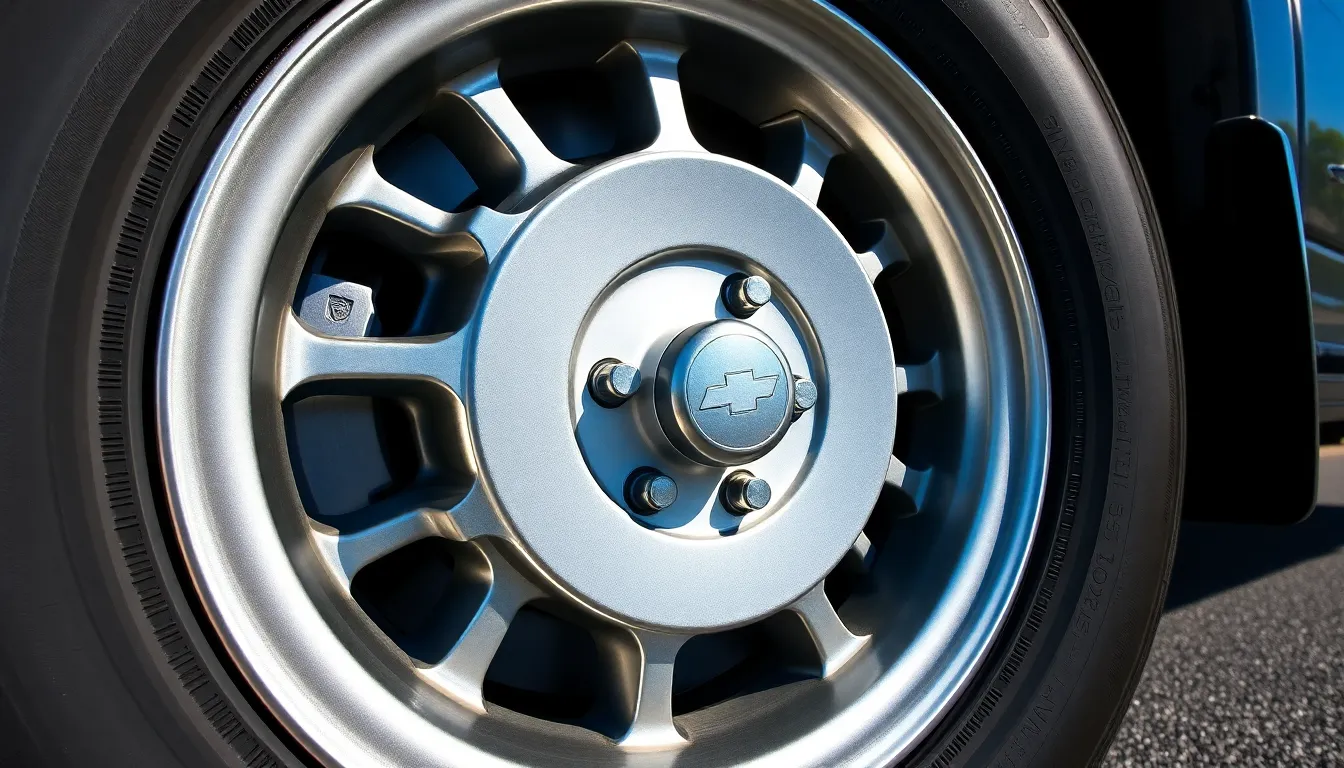
Selecting compatible wheels for your Chevy 1500 requires matching exact technical requirements beyond just the 6×139.7mm lug pattern. Understanding both OEM specifications and aftermarket compatibility ensures proper fitment and optimal performance for your truck.
OEM Wheel Specifications
Original equipment manufacturer wheels for the Chevy Silverado 1500 feature the standard 6×139.7mm bolt pattern with 6 lug bolts arranged in a 139.7-millimeter diameter circle. Chevrolet has maintained this configuration since the 1960s across multiple generations, particularly for 4×4 versions of the truck.
Standard conical seat lug nuts typically secure OEM wheels, though some designs use mag-style configurations depending on the exact wheel type. The recommended torque specification reaches 140 lb-ft for proper wheel mounting, though verification with your vehicle’s manual ensures accuracy for exact years and trim levels.
Offset measurements and center bore dimensions vary between model years and wheel designs, making it essential to match these specifications with OEM guidelines. Factory wheels incorporate load capacity ratings engineered specifically for the Silverado 1500’s weight distribution and performance requirements.
Aftermarket Wheel Compatibility
Aftermarket wheels must conform to the 6×139.7mm bolt pattern as the fundamental requirement for Silverado 1500 fitment. Manufacturers design many aftermarket options around this specification since Chevrolet has consistently used this pattern across various trucks and SUVs.
Load capacity requirements demand careful consideration when selecting aftermarket wheels, as they must support the truck’s gross vehicle weight rating safely. Proper offset specifications ensure the wheel sits correctly within the wheel well without causing clearance issues or affecting suspension geometry.
Center bore size compatibility prevents vibration and ensures proper wheel centering on the hub assembly. Many aftermarket wheels designed for Chevy half-ton pickups offer cross-compatibility due to the shared 6×139.7mm pattern across different Silverado generations.
Lug nut compatibility varies with aftermarket wheel designs, requiring conical, mag, or flat seat types depending on the wheel’s lug hole configuration. Maintaining the 140 lb-ft torque specification remains critical regardless of the lug nut style chosen for your aftermarket wheels.
Tools and Techniques for Measuring Lug Patterns
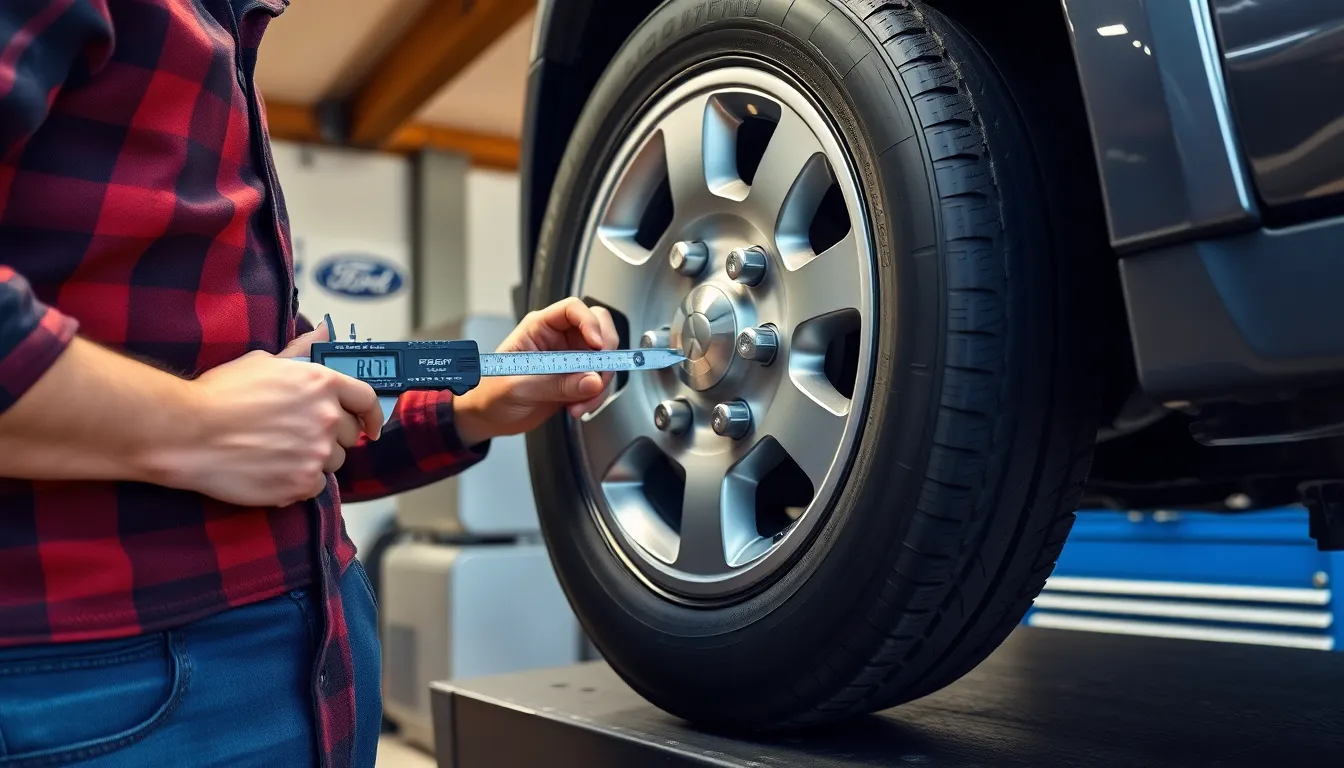
Measuring lug patterns accurately requires the right tools and systematic approach to ensure precise wheel fitment on your Chevy 1500.
Essential Measuring Tools
Digital calipers provide the most accurate measurements for bolt circle diameter, offering readings within 0.1mm precision. Steel rulers work effectively for quick measurements when calipers aren’t available. Measuring tapes serve as backup options but deliver less precision than dedicated measuring instruments.
Bolt pattern gauges eliminate guesswork by offering pre-marked templates for common configurations like the 6×139.7mm pattern found on Chevy 1500 models. Center bore gauges measure the wheel’s center hole diameter to ensure proper hub fitment.
Step by Step Measuring Process
Count the bolt holes first to determine the number of mounting points on your wheel hub. Chevy 1500 models consistently feature 6 bolt holes across all model years from 1988 to present.
Locate the bolt circle center by identifying the hub’s center point where all bolt holes are equidistant. Measure from center to center of opposite bolt holes when dealing with even numbered patterns like the 6-bolt configuration.
Calculate the diameter by measuring from the center of one bolt hole to the center of the bolt hole directly across from it. The Chevy 1500’s measurement equals 139.7mm or 5.5 inches.
Digital Measurement Techniques
Digital measuring apps on smartphones can assist with basic measurements but lack the precision required for exact bolt pattern verification. Online calculators help convert between metric and imperial measurements when working with different measurement systems.
Photo measurement tools allow you to capture wheel hub images with known reference objects for later analysis. CAD software enables precise digital measurements when working with technical drawings or specifications.
Professional Verification Methods
Tire shops possess specialized equipment for accurate lug pattern measurement and can verify your Chevy 1500’s 6×139.7mm configuration. Automotive service centers offer professional measurement services using calibrated tools.
Parts departments at Chevrolet dealerships provide definitive specifications for your exact model year and can confirm the exact bolt pattern requirements. Wheel manufacturers often provide measurement guides and compatibility charts for their products.
Common Issues and Troubleshooting

Lug pattern compatibility represents just one aspect of wheel maintenance for Chevy 1500 trucks. Several mechanical problems can arise that directly impact wheel security and vehicle performance.
Stripped or Damaged Lug Nuts
Over-tightening damages lug nuts more frequently than any other maintenance error on Chevy 1500 trucks. Incorrect tools create stress fractures in the threaded portions, while rust and corrosion gradually weaken the metal structure over time.
Troubleshooting damaged lug nuts requires immediate attention to prevent wheel detachment. Use a torque wrench set to 140 ft-lbs for the Silverado 1500’s M14 x 1.5 threaded system when removing wheels. Dedicated lug nut remover tools extract severely damaged nuts without destroying the wheel studs.
Prevention strategies include regular visual inspections every 5,000 miles and proper lubrication on exposed threads. Replace stripped or cracked lug nuts immediately rather than attempting temporary repairs that compromise safety.
| Component | Specification | Prevention Method |
|---|---|---|
| Torque Setting | 140 ft-lbs | Use calibrated torque wrench |
| Thread Size | M14 x 1.5 | Match replacement nuts exactly |
| Inspection Frequency | Every 5,000 miles | Visual check for cracks/corrosion |
Wheel Vibration Problems
Incorrect lug nut torque creates the most common vibration issues in Chevy 1500 trucks with the 6×139.7mm bolt pattern. Uneven tire wear patterns develop when wheels aren’t properly secured to the hub surface.
Diagnosis begins with checking all six lug nuts using a torque wrench calibrated to 140 ft-lbs. Damaged wheel hubs create persistent vibration even after proper torque application, requiring professional hub inspection.
Correction methods involve retorquing all lug nuts to specification and balancing tires if vibration continues. Inspect wheels for visible damage like cracks or bent sections that affect the mounting surface contact with the hub.
Long-term prevention requires torque verification after every 100 miles following wheel removal or tire rotation. Address vibration symptoms immediately to prevent accelerated tire wear and potential safety hazards during highway driving.
Upgrading and Modification Considerations
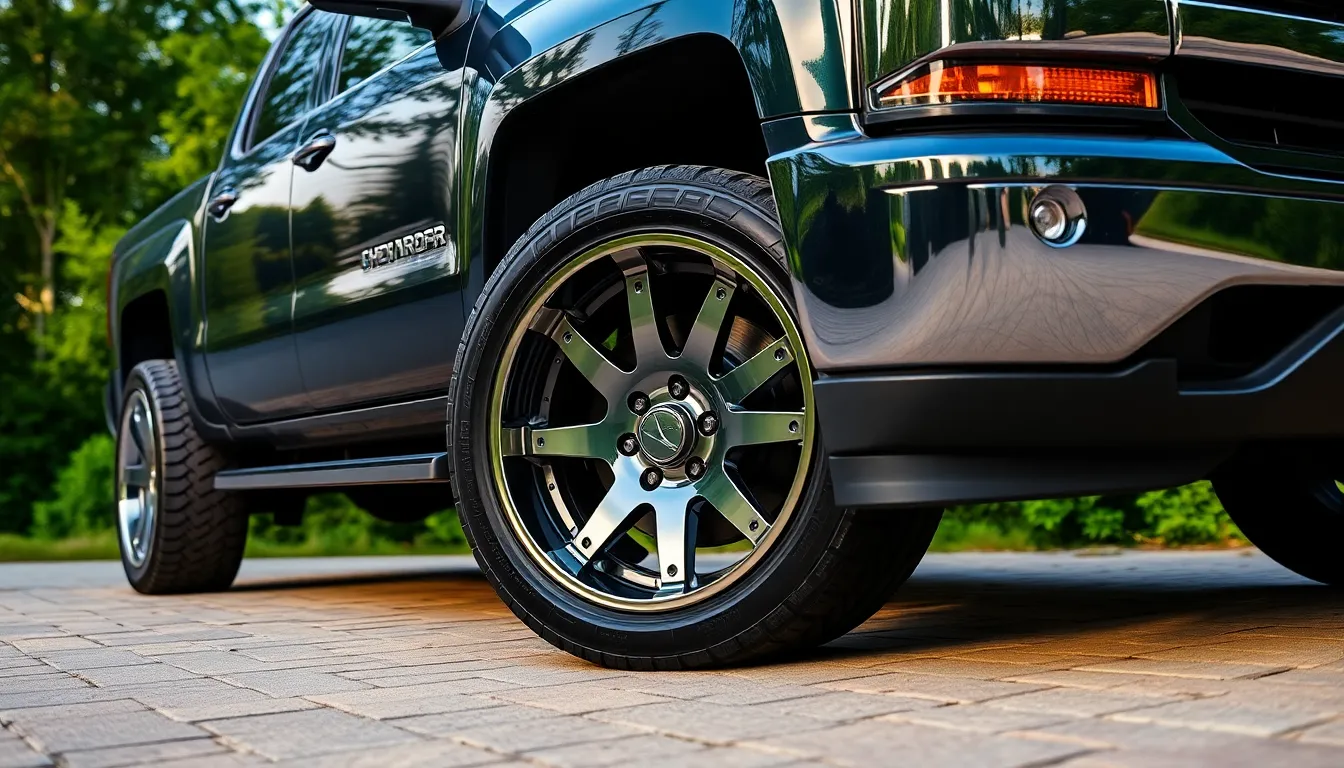
Wheel upgrades for your Chevrolet 1500 require strict adherence to the 6×139.7 mm bolt pattern specification. We recommend verifying compatibility before purchasing any aftermarket wheels to ensure proper fitment and safety. The standard lug pattern remains consistent across model years from 1988 to 2021, making wheel selection straightforward for most Silverado 1500 owners.
Aftermarket rim selection demands careful attention to multiple compatibility factors beyond the basic bolt pattern. Load capacity ratings must match or exceed your truck’s requirements, particularly when hauling heavy loads or towing trailers. Wheel offset measurements affect steering geometry and suspension performance, so we suggest consulting manufacturer specifications before making modifications.
Center bore diameter compatibility prevents vibration issues that commonly occur with improperly fitted wheels. The Silverado 1500’s hub-centric design requires precise matching between the wheel’s center bore and the vehicle’s hub diameter. Hub-centric rings provide answers when aftermarket wheels feature larger center bores than stock specifications.
Lug nut compatibility extends beyond thread pitch to include seat design and material composition. Standard conical seat lug nuts work with most aftermarket wheels, while mag-style or flat seat designs require exact wheel configurations. We emphasize using the manufacturer-recommended torque specification of 140 lb-ft to prevent wheel detachment and ensure optimal performance.
Professional installation becomes essential when upgrading to significantly different wheel sizes or styles. Tire shops and automotive service centers possess specialized equipment for proper mounting and balancing procedures. These professionals verify compatibility factors that DIY installers might overlook, including clearance issues with brake components and suspension parts.
Safety considerations multiply when modifying wheel specifications beyond factory recommendations. Larger diameter wheels require lower profile tires that affect ride quality and increase susceptibility to road damage. We recommend consulting your owner’s manual and considering professional advice before making substantial modifications to wheel size or style.
Conclusion
Understanding your Chevy 1500’s lug pattern isn’t just about knowing the numbers – it’s about making informed decisions that keep you safe on the road. We’ve covered everything from the standard 6×139.7mm specification to proper torque requirements and measurement techniques.
Whether you’re replacing worn wheels or upgrading to aftermarket options the key is maintaining compatibility with your truck’s original specifications. Remember that proper installation and regular maintenance are just as important as selecting the right wheels.
When in doubt don’t hesitate to consult with professionals or refer to your owner’s manual. Your Chevy 1500 deserves wheels that fit perfectly and perform reliably for years to come.
Frequently Asked Questions
What is the lug pattern for a Chevy 1500?
The Chevy 1500 uses a 6×139.7mm bolt pattern across most model years from 1988-2018. This means 6 bolt holes arranged on a 139.7mm diameter circle. While some sources mention 6×5.5 inches, the precise metric measurement is 6×139.7mm for proper wheel fitment and compatibility.
How do I measure my Chevy 1500’s lug pattern?
Count the bolt holes (should be 6 for Chevy 1500), then measure the distance between bolt hole centers across the circle. Use digital calipers for accuracy. For 6-bolt patterns, measure from the center of one bolt hole to the center of the opposite hole directly across the hub.
What torque specification should I use for Chevy 1500 lug nuts?
The recommended torque specification for Chevy 1500 lug nuts is 140 lb-ft. Use a calibrated torque wrench and follow a star pattern when tightening. The thread size is M14 x 1.5. Proper torque prevents wheel detachment and ensures safe driving.
Are all Chevy 1500 generations compatible with the same wheels?
Yes, most Chevy 1500 generations from 1988-present share the same 6×139.7mm bolt pattern, allowing cross-generational wheel compatibility. However, check wheel offset, center bore diameter, and load capacity ratings to ensure proper fitment and performance across different model years.
What should I consider when buying aftermarket wheels for my Chevy 1500?
Ensure the wheels have a 6×139.7mm bolt pattern, appropriate load capacity rating, correct wheel offset, and proper center bore diameter (78.1mm for most models). Verify lug nut compatibility and consider professional installation for optimal safety and performance.
What causes wheel vibration on a Chevy 1500?
Wheel vibration typically results from incorrect lug nut torque, improper wheel balance, or mismatched center bore diameter. Check that lug nuts are torqued to 140 lb-ft in a star pattern, ensure wheels are properly balanced, and verify center bore compatibility to eliminate vibration issues.

